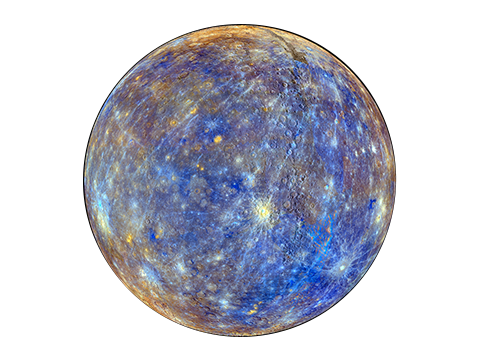What is mercury
Mercury is the smallest planet in our solar system. It’s just a little bigger than Earth’s moon. It is the closest planet to the sun, but it’s actually not the hottest. Venus is hotter. Like other such planets mercury is also a rocky planet and it does not have atmosphere and moons. mercury name as Budha graha (Sanskrit: बुध) the hindu culture and Hermes, the greek fleet-footed messenger of the gods

Year on mercury
This small planet spins around slowly compared to Earth, so one day lasts a long time. Mercury takes 59 Earth days to make one full rotation. A year on Mercury goes by fast. Because it’s the closest planet to the sun, it doesn’t take very long to go all the way around. It completes one revolution around the sun in just 88 Earth days.

Size and distance
Mercury is the smallest planet with a radius of 1,516 miles (2,440 kms), Mercury is a little more than 1/3 the width of Earth. If Earth were the size of a nickel, Mercury would be about as big as a blueberry.
From an average distance of 36 million miles (58 million kms), Mercury is 0.4 astronomical units away from the Sun. One astronomical unit (abbreviated as AU), is the distance from the Sun to Earth. From this distance, it takes sunlight 3.2 minutes to travel from the Sun to Mercury. Mercury's highly eccentric, egg-shaped orbit takes the planet as close as 29 million miles (47 million kms) and as far as 43 million miles (70 million kms) from the Sun. It speeds around the Sun every 88 days, traveling through space at nearly 29 miles (47 kms) per second, faster than any other planet.

Temperature
Mercury is the most closest planet to sun temperatures on Mercury's surface can reach 800 degrees Fahrenheit (430 degrees Celsius) during the day. Because the planet has no atmosphere to retain that heat, night time temperatures on the surface can drop to minus 290 degrees Fahrenheit (minus 180 degrees Celsius).
structure
Mercury is the second densest planet, after Earth. It has a large metallic core with a radius of about 1,289 miles (2,074 kms), about 85% of the planet's radius. There is evidence that it is partly molten, or liquid. Mercury's outer shell, comparable to Earth's outer shell (called the mantle and crust), is only about 400 kms (250 miles) thick.
Comments
Post a Comment